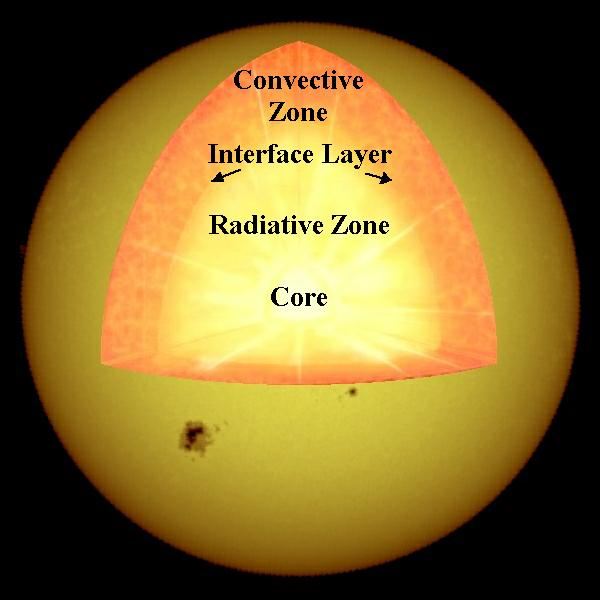 In general, convection is another mechanism by which heat can be transferred. In the same manner, the Sun uses this method to transfer the energy it produces from the core towards the outermost region. This process takes place in the region of the Sun called the convection zone. From the core, the energy is transferred into the radiation zone through radiation mechanism. As the energy escape from this region, it begins its journey outward passing through another layer that uses a different means of transfer.
In general, convection is another mechanism by which heat can be transferred. In the same manner, the Sun uses this method to transfer the energy it produces from the core towards the outermost region. This process takes place in the region of the Sun called the convection zone. From the core, the energy is transferred into the radiation zone through radiation mechanism. As the energy escape from this region, it begins its journey outward passing through another layer that uses a different means of transfer.
The process occurring in a convection zone is similar to boiling water in a pot thus this is sometimes referred to as boiling zone. Outside the radiation zone, the temperature is much lower compared to the temperature within the region. From about 5 million degrees Kelvin, the temperature drops down to only about 2 million degrees Kelvin. However, this temperature is still relatively higher than within the convection region. What happens during the convection mechanism is that the hotter material near the radiation zone tends to rise. When this reaches the top of the convection region, it cools down and sinks again. This is a direct way to transfer energy and thus occurs much faster than in radiation zone.
The convection zone is considered to be the outermost layer of the interior portion of the sun. This layer extends to about 200,000 km up to the visible surface of the Sun known as the photosphere. When seen through a telescope, a white ball with some dark patches can be observed. These dark patches are termed as sunspots. The entire surface of this region is covered with convection cells similar to what one can be observed on the surface of boiling water. The bright and dark regions represent the hot rising and the cold sinking materials respectively.
